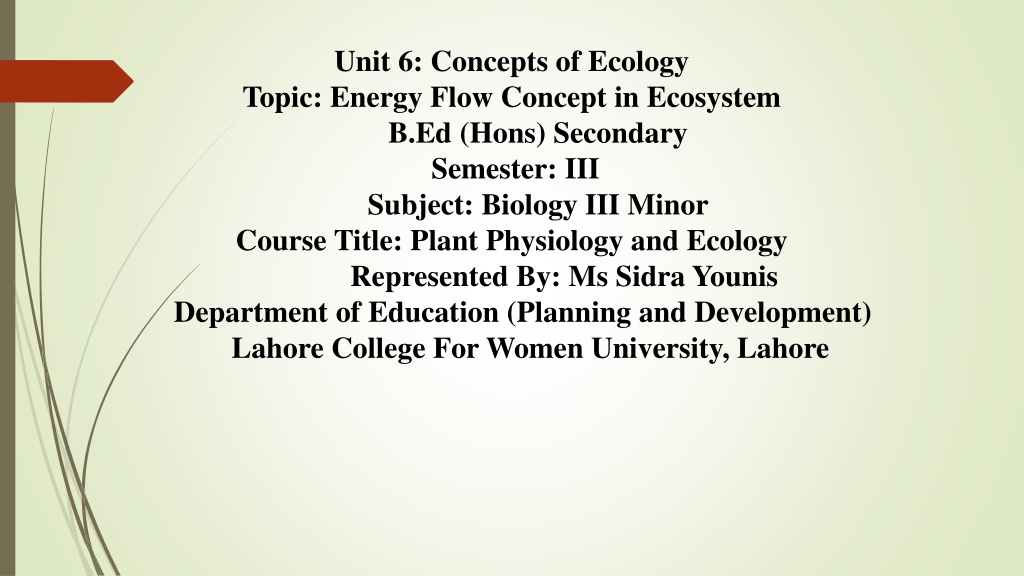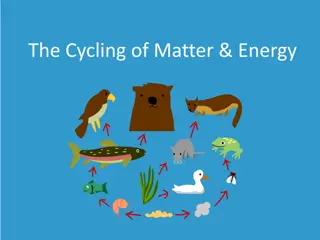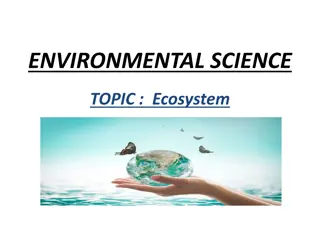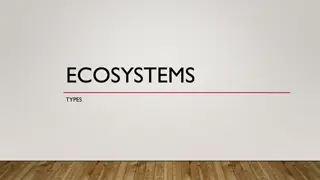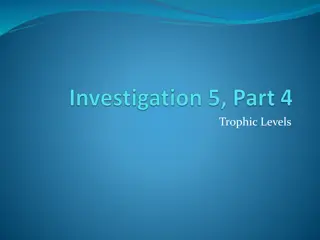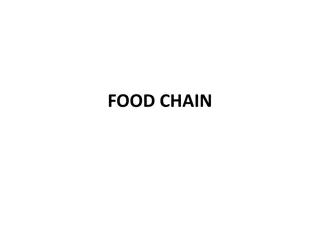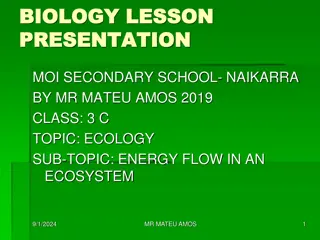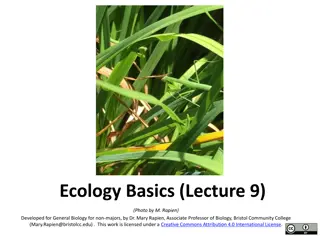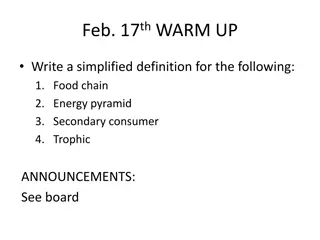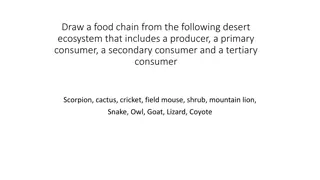Understanding Energy Flow in Ecosystems
Energy flow in ecosystems is vital for sustaining life as it moves through different trophic levels. Primary producers harness solar energy to create organic material, which is then consumed by herbivores, carnivores, and decomposers, forming intricate food chains. Terms like biomass, productivity, and primary productivity play key roles in understanding how energy is incorporated and lost within ecosystems. Despite the efficiency loss, the energy flow remains crucial for ecosystem balance.
Download Presentation

Please find below an Image/Link to download the presentation.
The content on the website is provided AS IS for your information and personal use only. It may not be sold, licensed, or shared on other websites without obtaining consent from the author. Download presentation by click this link. If you encounter any issues during the download, it is possible that the publisher has removed the file from their server.
E N D
Presentation Transcript
Unit 6: Concepts of Ecology Topic: Energy Flow Concept in Ecosystem B.Ed (Hons) Secondary Semester: III Subject: Biology III Minor Course Title: Plant Physiology and Ecology Represented By: Ms Sidra Younis Department of Education (Planning and Development) Lahore College For Women University, Lahore
Energy Flow Concept Energy moves life. The cycle of energy is based on the flow of energy through different trophic levels in an ecosystem. Our ecosystem is maintained by the cycling energy and nutrients obtained from different external sources. At the first trophic level, primary producers use solar energy to produce organic material through photosynthesis.
The herbivores at the second trophic level, use the plants as food which gives them energy. A large part of this energy is used up for the metabolic functions of these animals such as breathing, digesting food, supporting growth of tissues, maintaining blood circulation and body temperature. The carnivores at the next trophic level, feed on the herbivores and derive energy for their sustenance and growth. If large predators are present, they represent still higher trophic level and they feed on carnivores to get energy. Thus, the different plants and animal species are linked to one another through food chains. Decomposers which include bacteria, fungi, molds, worms, and insects break down wastes and dead organisms, and return the nutrients to the soil, which is then taken up by the producers. Energy is not recycled during decomposition, but it is released.
Terms to know for energy flow in ecosystem Biomass It is physical organic material Energy is stored in, like the mass that makes up plants and animals Productivity: It is the rate at which energy is incorporated into the bodies of organisms. Gross primary productivity (GPP): Energy from the sun is captured in glucose molecules Total chemical energy is generated by primary producers in an ecosystem Net primary productivity (NPP): Measure chemical energy is generated by primary producers Energy lost due to metabolic needs
Energy flow is not 100 efficient : 10% energy required from one trophic level to the next level. 90% is lost as heat.
Food Chain and Food Web A food chain is a linear sequence of organisms through which nutrients and energy pass as one organism eats another. The levels in the food chain are producers, primary consumers, higher-level consumers, and finally decomposers. These levels are used to describe ecosystem structure and dynamics. There is a single path through a food chain. Each organism in a food chain occupies a specific trophic level (energy level), its position in the food chain or food web. A series of organisms dependent on the next as a source of food. A food web is a concept that accounts for the multiple trophic (feeding) interactions between each species. Example: The grasshopper eats grass, the frog eats the grasshopper, the snake eats the frog and the eagle eats the snake.
